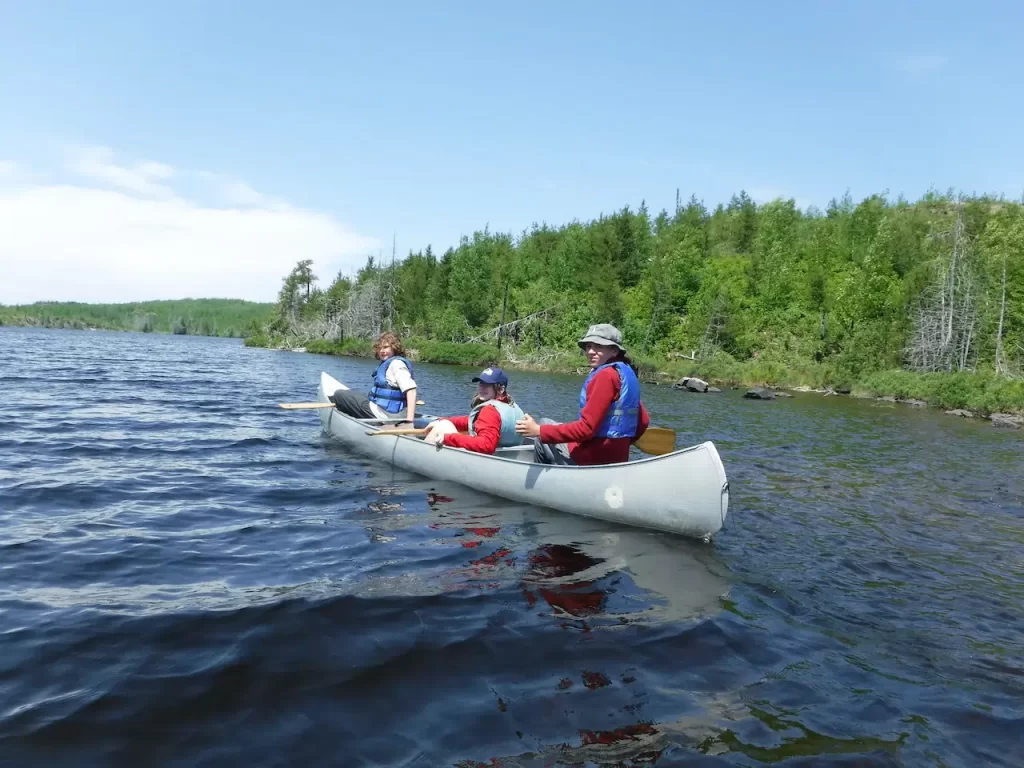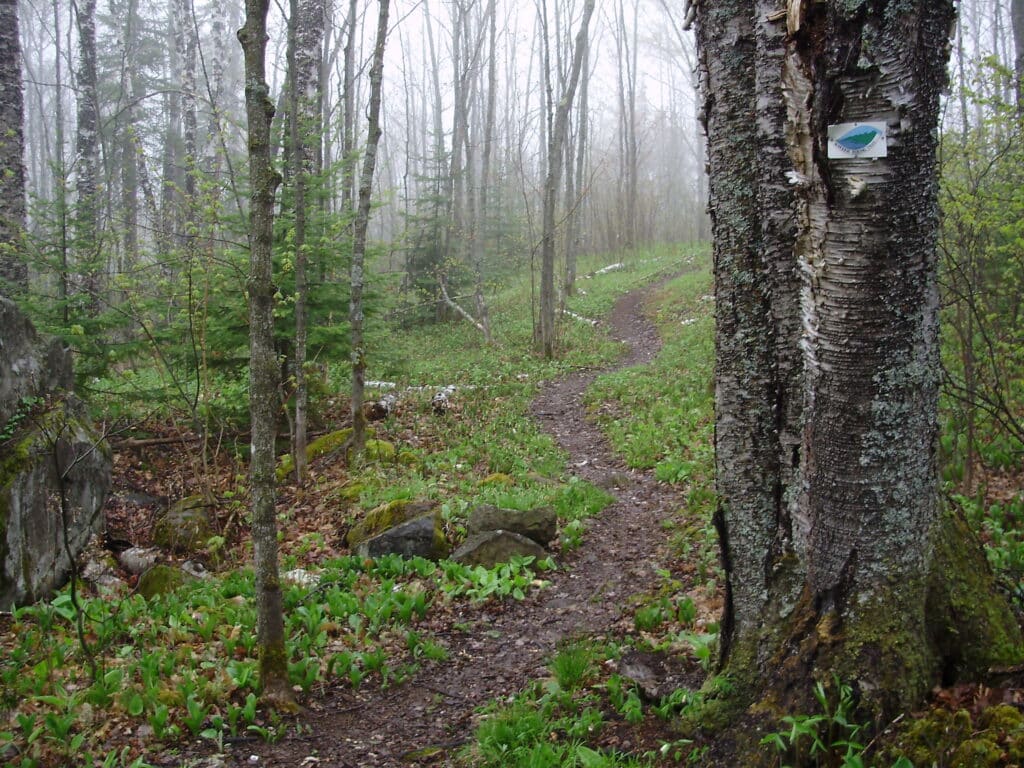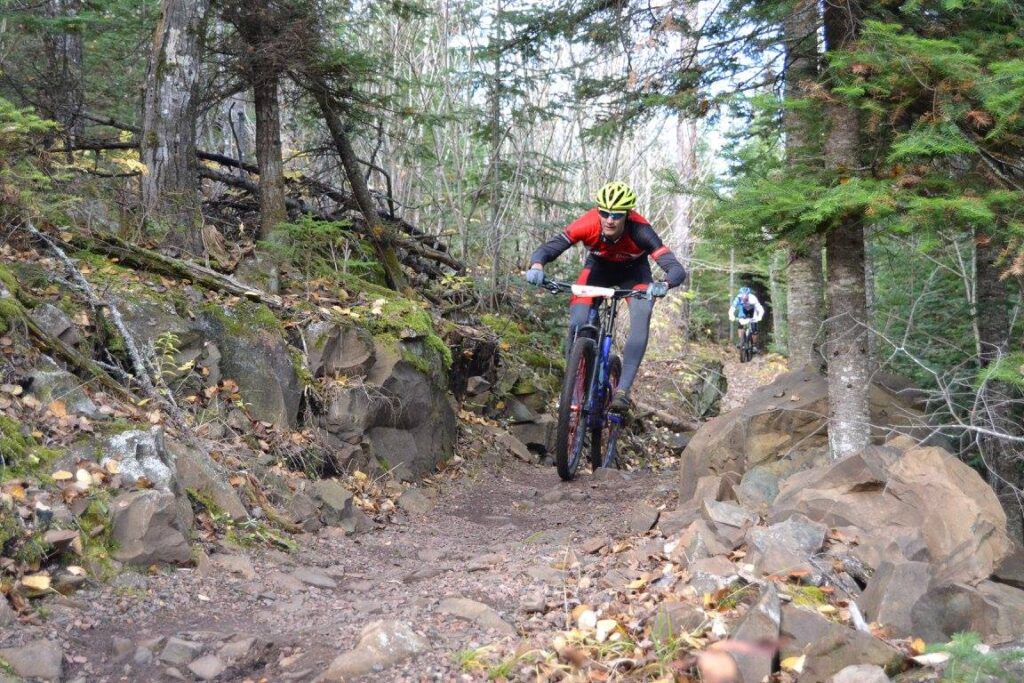Bills passed in recent weeks by the Minnesota legislature and signed by Governor Tim Walz will provide money for several places and programs connected to the North Shore and Superior National Forest region. Appropriations include a program that provides wilderness canoe trips and other Boundary Waters education and experiences for children, and support for improving and maintaining the Superior Hiking Trail.
Most of the funding is provided by the Minnesota Environment and Natural Resources Trust Fund, on the recommendation of the Legislative-Citizen Commission on Minnesota Resources. The Trust Fund is primarily supported financially by proceeds from the state lottery. The legislature also approved a ballot measure this year to give Minnesotans the chance to vote on renewing the lottery funding at the ballot box near fall.

Breaking down Boundary Waters barriers
The Friends of the Boundary Waters Wilderness celebrated this week a $1 million grant that will expand its “No Boundaries to the Boundary Waters” educational program. Begun in 2020 and growing ever since, the new funding will allow the group to more than double the number of students it reaches, connecting with at least 10,000 Minnesota youth between grades six and 12.
The program provides important experiences, develops future stewards, and meets educational standards in science, social studies, language arts, and physical education.
School programs can range from topics like the unique wilderness ecosystem and its healthy water quality to outdoor skills and teamwork. Friends educators lead exercises in map reading and navigation, Leave No Trace principles, and teamwork. They also offer field trip-type programs, where the group can share the Boundary Waters at a school’s local park or other outdoor areas.
Last year, the Friends said “No Boundaries” is intended to help young people without the means to experience the wilderness.
“Reasons are complex, but barriers range from factors such as the financial means, lack of trusted adults able and willing to lead a trip, lack of skill, fear of the wilderness, among others which prevent young people from exploring this natural gem,” the group said in a Quetico-Superior Wilderness News story.

Hardening hiking trails
The Superior Hiking Trail Association has been awarded two grants to help with priority projects along the popular 310-mile trail that runs along the North Shore. The funding adds up to $565,000. The nonprofit works with volunteers to maintain the trail, and must work with more than 200 landowners whose property the trail traverses.
“The majority of the SHT north of Two Harbors was built over 30 years ago and is showing its age,” the organization says. “Erosion due to natural causes and visitor use has impacted the trail tread. Tight-to-shoreline trail sections create unique maintenance challenges and require attention. Safety is also a great concern, with aging infrastructure and the loops being most popular with more casual and less experienced hikers.”
A $368,000 grant will focus on restoring popular river loops sections, which follow Lake Superior tributaries and receive heavy use. A grant for $197,000 will renew trails and a campground along the section of trail that provides access to Bean and Bear Lakes, where an overlook of the lakes provides what the group calls “one of Minnesota’s most iconic vistas.” These funds add to a previous grant of $450,000 designated to rebuild “damaged and dangerous” sections of the trail as well as building a new segment.
Much of the work will focus on the simple principle of “keeping people on the trail and water off.” The organization will “armour” the trail against erosion primarily through the use of stone collected nearby, what they say is “the most resilient and long-lasting material available to Northeastern Minnesotan trail builders.”

Funding facilities
Other grants will support efforts to improve public access to popular parks and waters in northeastern Minnesota. This includes a National Park visitor center, a boat landing, and mountain bike trails.
Nearly $5 million was included for the proposed new Voyageurs National Park visitor center and a municipal campground in Crane Lake. The project has been in the planning stages for several years, with partners including the National Park Service, Voyageurs Conservancy, and the town of Crane Lake. The new visitor center is expected to focus on the region’s famed dark skies, as well as Ojibwe culture. The location is also notable for providing access to both Voyageurs National Park and the Boundary Waters Canoe Area Wilderness.
In Grand Marais, the Superior Cycling Association will receive $200,000 for the second phase of a project to restore and update popular mountain bike trails at Pincushion Mountain. The goal is to improve environmental sustainability and rider experiences.
“The rehabilitation will improve drainage, increase safety, and decrease maintenance costs which protect and enhance the natural resource,” the group says. “Additionally, rehabbed trails will reflect current building technologies, and modernize the experience expected by today’s riders.”
Additional funding includes $762,000 for a new dock and safe harbor in Ranier, just east of International Falls. The boating facilities are intended to increase public access for boating on Rainy Lake. A $1 million grant will support a new trailhead on the North Shore in Silver Bay, where facilities will be provided for hikers, bikers, ATV riders, boaters and beach-goers.
* Editor’s note: on the original date of publication there was an error in the grant amount to the Superior Hiking Trail Association

